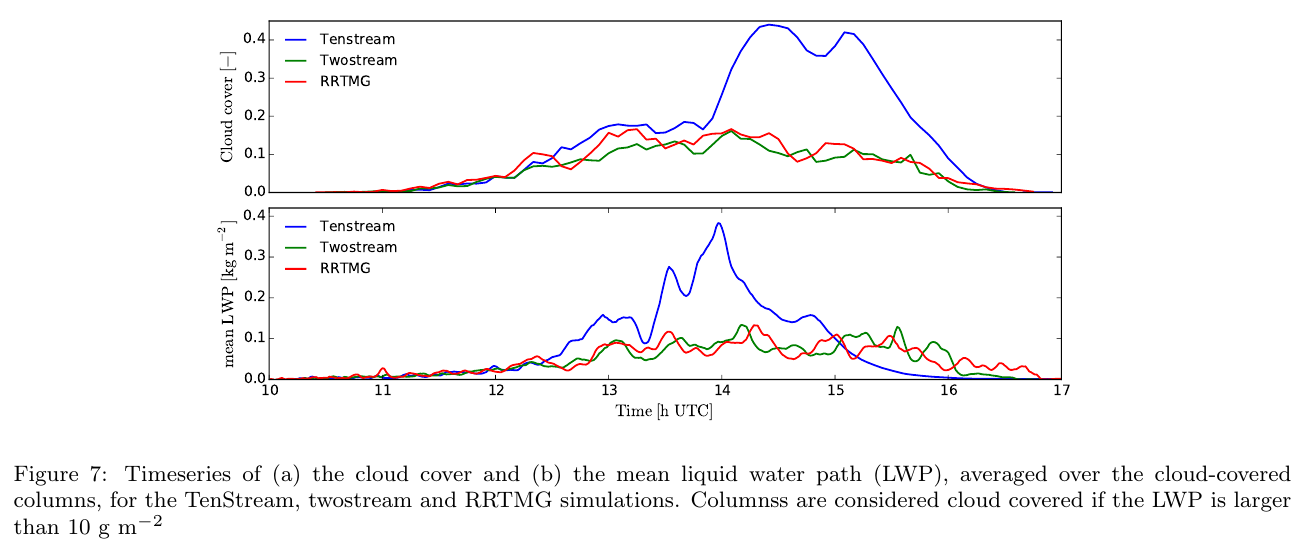n the course of Menno Veeermans Internship at LMU Munich, he prepared a repot with the following abstract:
Althought radiative transfer is an important atmospheric process, it is often solved in one dimension only.
While the use of 1D radiative transferwq schemes results in considerable savings of computational time, it
neglects the horizontal transport of radiation. In this study, the TenStream radiative transfer solver was
coupled to the Dutch Atmospheric Large-Eddy Simulation (DALES) to solve radiative transfer in 3D. The
radiative fluxes and heating rates in the DALES-TenStream coupling are validated and the performance
of the coupling is assessed. Subsequently, I used the TenStream solver to study the development of the
boundary layer and the interaction between clouds and surface fluxes with 3D radiative transfer. In
the validation part, the TenStream solver shows good agreement with two 1D radiative transfer solvers
and correctly applied heating rates. However, the TenStream solver is over 20 times slower than the
two 1D radiation schemes, but the difference in runtime may be reduced by further optimizing the
coupling. To study the effects of solving radiative transfer in 3D, I conducted three simulations, using
the TenStream solver and two 1D radiative transfer solvers. The simulations are based on a case with
shallow cumulus developing in the afternoon over grassland, without horizontal wind or precipitation.
It is found that using 3D radiative transfer results in stronger convection, thicker clouds and a higher
cloud cover. Consequently, the incoming shortwave radiation and the surface heat fluxes are lower in
the simulation driven by 3D radiation. However, due to the displaced cloud shadows, the sensible and
latent heat fluxes beneath clouds are larger with 3D than with 1D radiative transfer, which also explains
the stronger convection with 3D radiation. Conversely, the heat fluxes are lower in the cloud-shadowed
areas with 3D radiative transfer. With a diurnal cycle of solar elevation angles up to about 37◦ , the
simulations showed significant differences in the development of the boundary and clouds due to the
neglection of horizontal energy transfer with 1D radiation. The results of this study show that solving
radiative transfer in 3D may be necessary to accurately simulate the daily evolution of the atmosphere.
The report is available here
One particular interesting result for me was the reocurring theme of the doubling of liquid water paths on short timescales which was already evident in UCLA-LES simulations that we did with respect to radiatively induced convective organization into cloud streets. Menno`s results show that the radiative feedbacks are robust with respect to the LES model choice and are not limited to constant solar angles but rather presist also if the sun angles change during the day.
Further results on the topic of direct and diffuse partitioning have come up in
Studying the partitioning between direct and diffuse components
